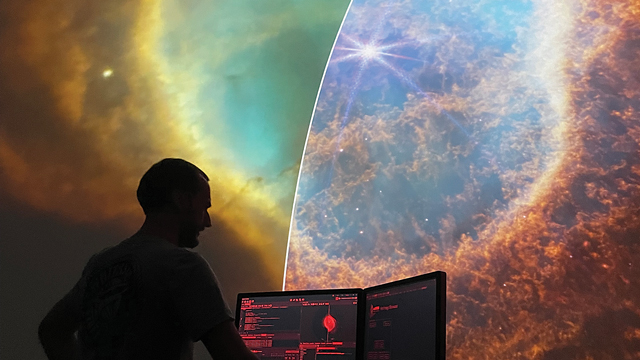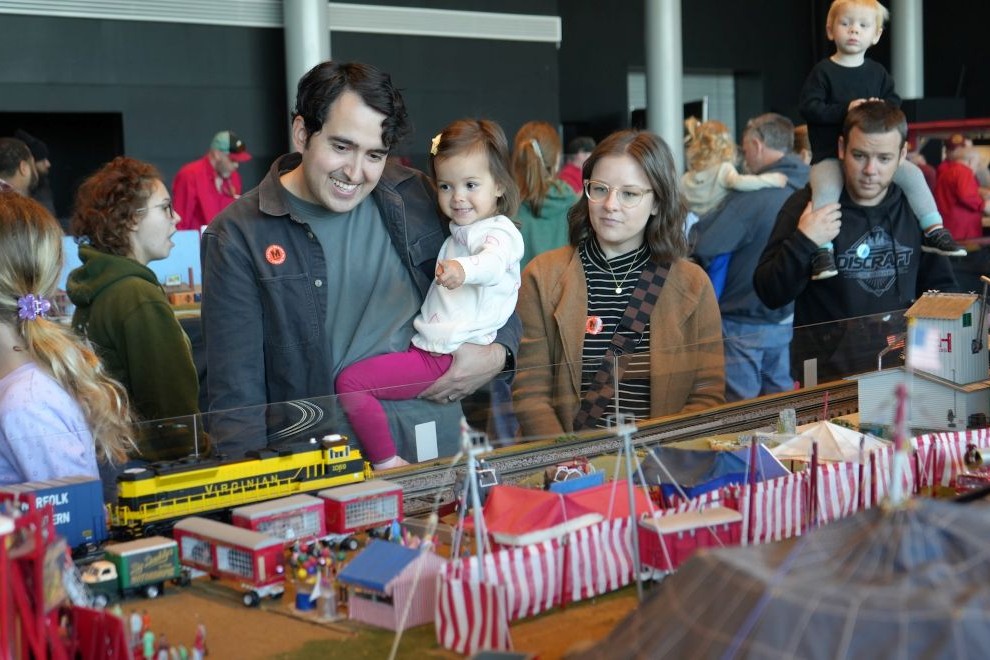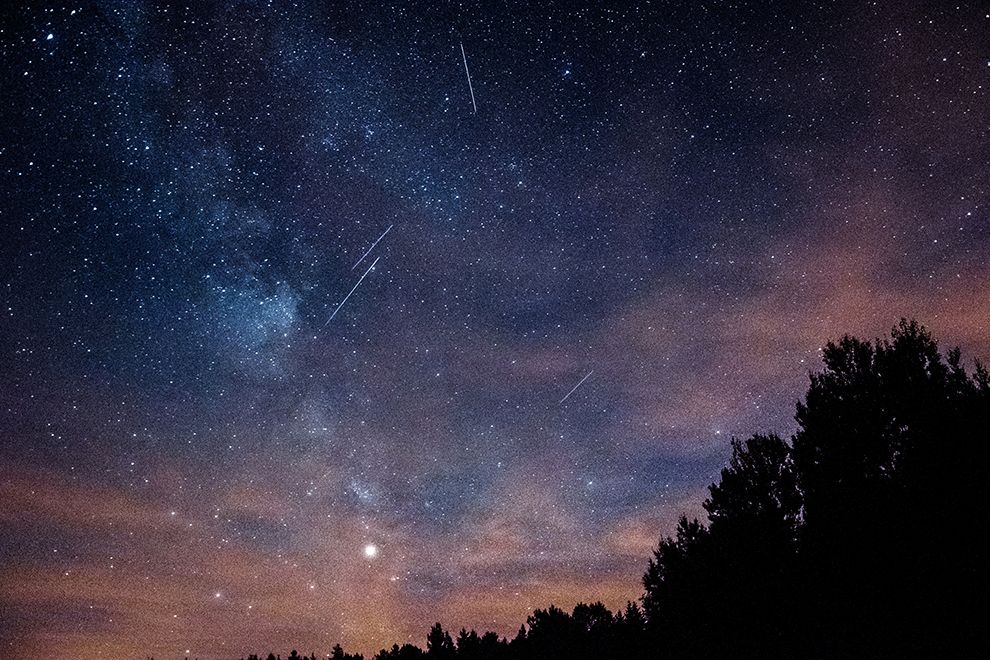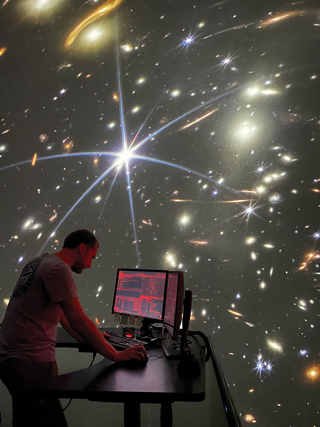
Like kids, scientists ask a lot of questions. Take, for example, “Where did I come from?” That’s one of humanity’s most common questions, and it’s asked by everyone from children to pyschologists to biologists. Astronomers, too, are asking that question, and on December 25, 2021, they got a new tool to help with answers: the James Webb Space Telescope (JWST).
Folded inside a rocket nose cone, JWST launched on a journey leading one million miles from Earth. Over the next six months, the observatory was painstakingly unfolded, aligned, and tested by engineers from an international team that included NASA, the European Space Agency, and the Canadian Space Agency.
JWST’s high-tech cameras offer earthlings a new lens through which to see celestial objects that are distant, faint, or hidden by dust thanks to their infrared vision, which senses colors of light invisible to the human eye. The telescope captures images and transmits them back to Earth, allowing astronomers to peer into the vastness of space. In July 2022, we got our first glimpse at how scientists will use this new instrument as JWST’s first full-color images were revealed, and they are spectacular!
In one image, a vast star-forming region is seen in unprecedented detail. In another, a star that was once like our sun is seen throwing off its outer layers to form a planetary nebula – a bubble of dust and gas that could eventually find itself recycled into the next generation of stars and planets.
Another early release from JWST featured a spectrum, light split into its component colors like a rainbow. In this case, it’s a spectrum of starlight passing through a distant planet’s atmosphere. The squiggly line graph may not be the prettiest picture, but it’s the sort of data that could hold the answers to big questions.
The target exoplanet (or a planet that’s outside our solar system), known as WASP-96 b, is a scorching gas giant planet and decidedly not earth-like, but JWST easily detected the spectral fingerprint of water vapor in its atmosphere. With thousands of known planets scattered across the Milky Way galaxy, JWST will have many more chances to seek out an earth-like atmosphere around a small, rocky planet.
When JWST is turned on other galaxies, its ability to transform our view of the universe is on full display. In a cluster of interacting galaxies called Stephan’s Quintet, JWST has already revealed the composition of the dust and gas spiraling around a super-massive black hole. And in what is referred to as its first deep field image, extremely old galaxies can be seen in the background; JWST can detect the signature of oxygen in these galaxies, some of which are about 13 billion years old. And that’s just the beginning.
As of this writing, analysis of JWST’s earliest science data (observations not part of the initial image release) has revealed a candidate for the oldest galaxy ever observed, opening up a window to the state of the universe when it was a mere 350 million years old. Though this discovery needs to be confirmed, the possibility of JWST setting records so early in its mission, before astronomers even had a chance to push it to its limits, is amazing.
The launch, deployment, and now, the start of regular observations with JWST represent a historical moment for astronomy. But the greatest power of this new telescope is surely its unique ability to inspire.
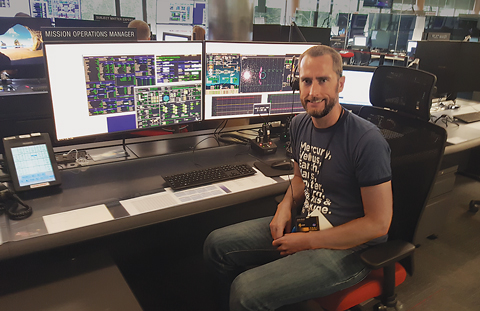
When the Apollo 11 astronauts stepped on the moon fifty-three years ago, much of the world was watching, and among that vast audience, few forgot the sight. That astronomical event also motivated countless future scientists, engineers, and astronauts to work in the space industry and drive exploration forward. For those under fifty, the launch, repair, and three decades worth of breathtaking imagery from the Hubble Space Telescope may have been what pushed them toward careers in science. Now, for those growing up in a world where there have always been footprints on the moon and a school bus-sized telescope orbiting the planet, JWST can be their career catalyst by revealing how much more there is to see.
The quality of its first images, as well as the wealth of information they contain, leaves little doubt that JWST will help write new answers to tough questions very soon. It’s possible that JWST’s mission will last up to twenty years, so once today’s questions are answered, we could still have more than a decade to think of bigger challenges for it to take on. That leaves plenty of time for tomorrow’s questions to be answered by the same telescope, but under the guidance of the next generation of innovative, curious astronomers – including those future scientists living in your household right now.
Photography: Courtesy Science Museum of Virginia


